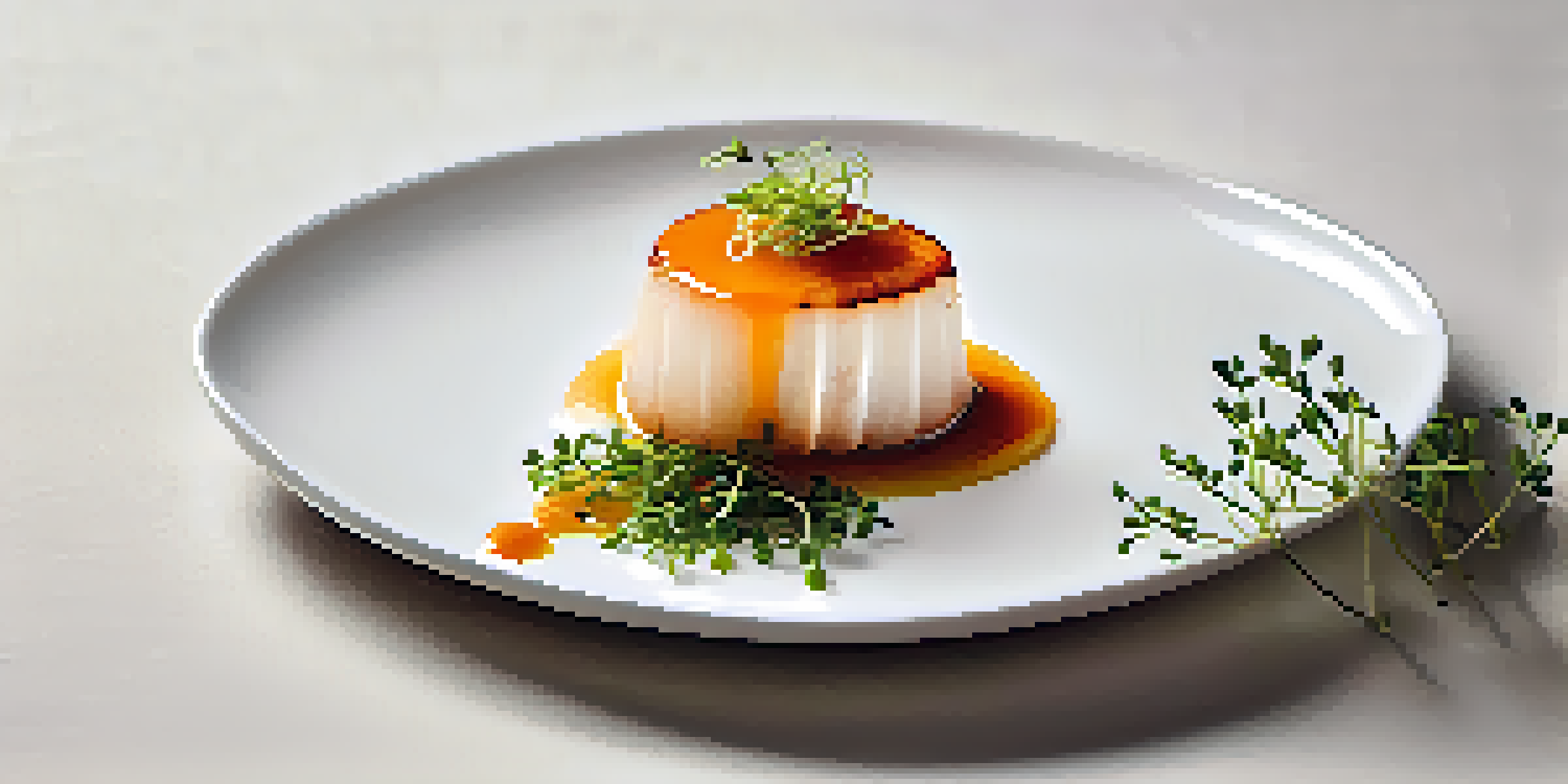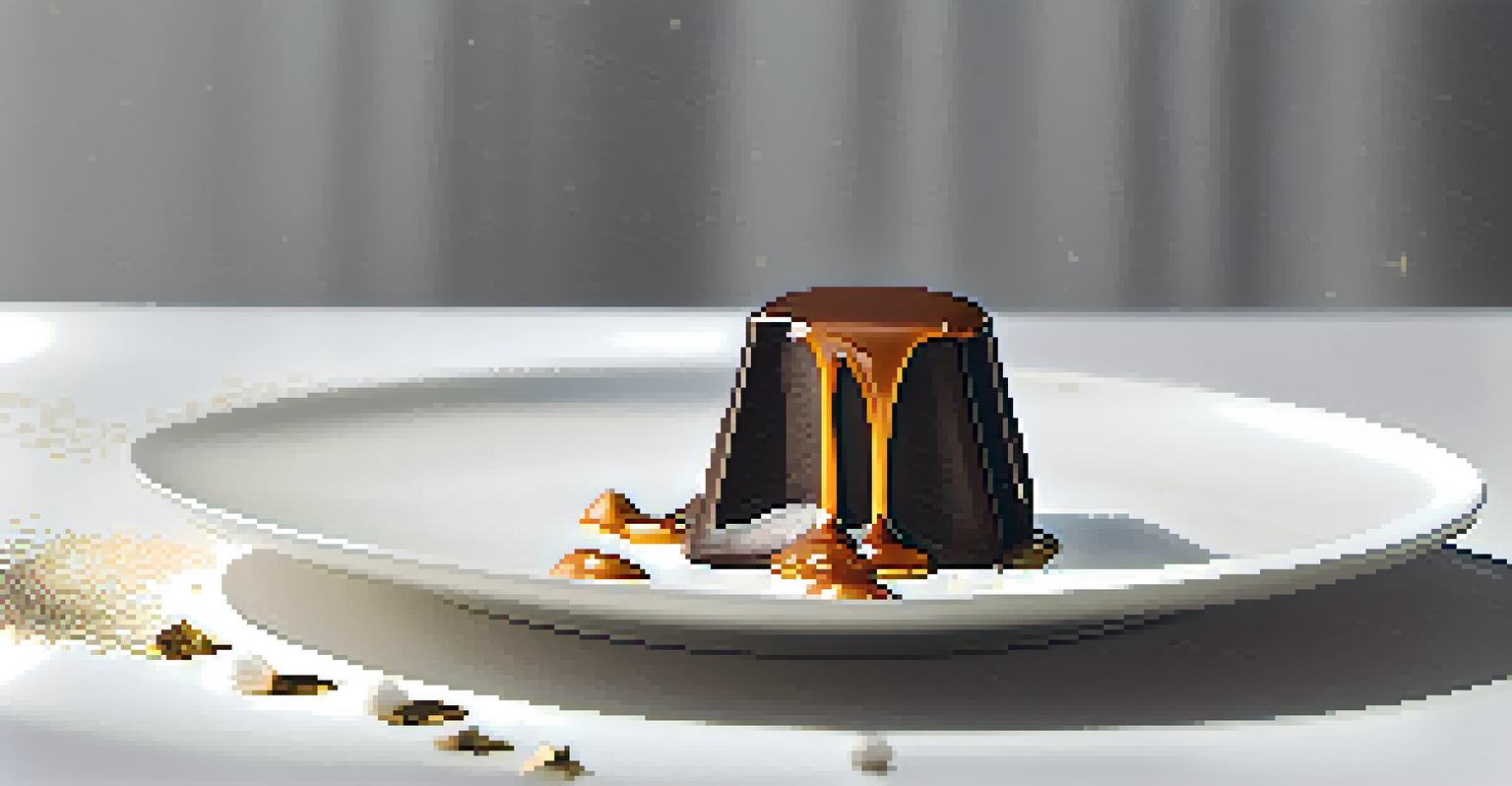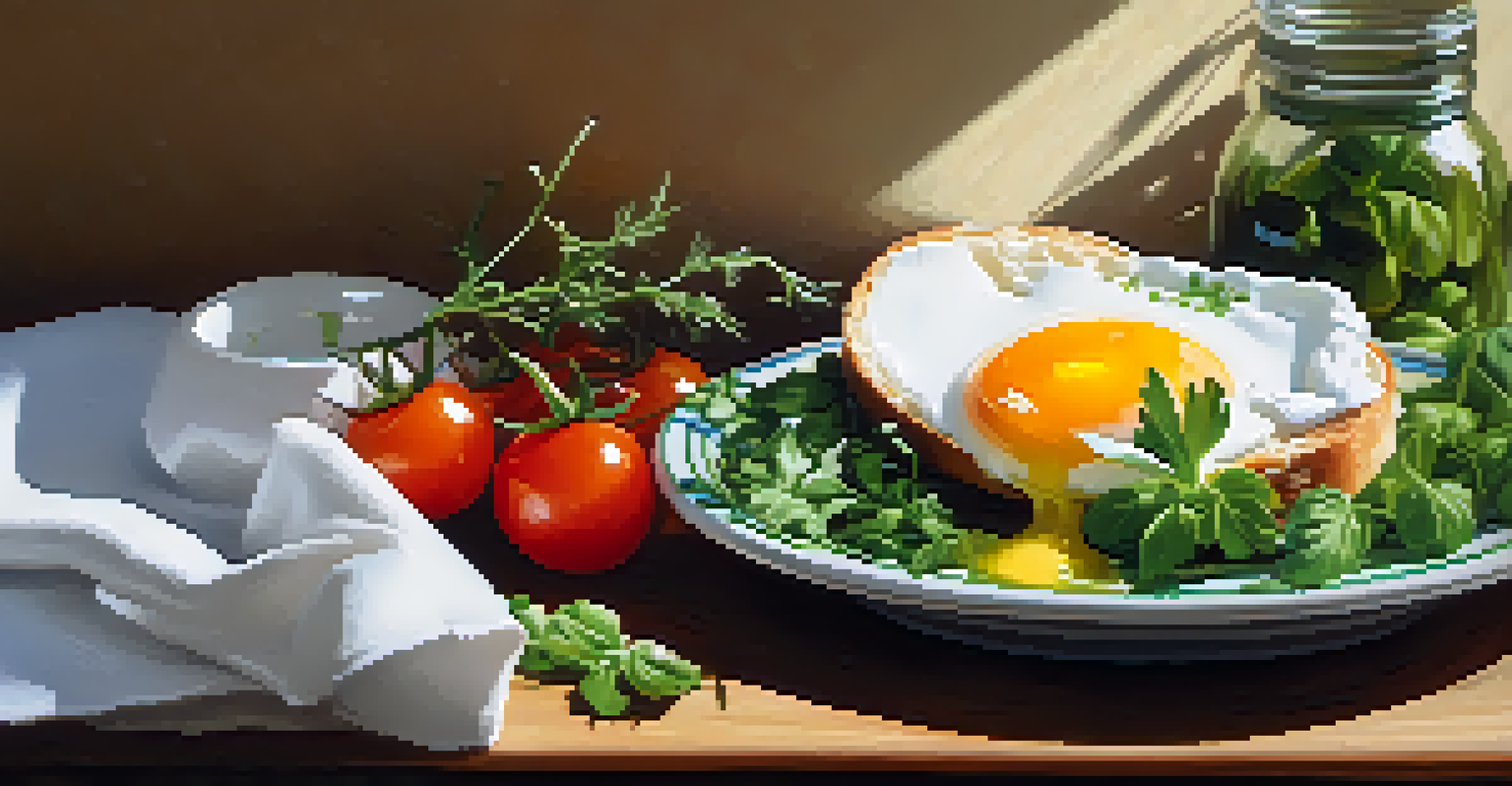Minimalism in Food Presentation: Less is More in Culinary Art

Understanding Minimalism in Food Presentation
Minimalism in food presentation focuses on simplicity and clarity. It emphasizes the beauty of each ingredient, allowing the natural colors and textures to shine. By stripping away unnecessary elements, chefs can create a more impactful visual experience.
Simplicity is the ultimate sophistication.
This approach invites diners to appreciate the essence of the dish, sparking curiosity and engagement. Imagine a perfectly seared scallop resting on a single dot of vibrant sauce; it draws your eye, making you eager to taste. Such simplicity can evoke a deeper connection with the food.
Ultimately, minimalism in presentation isn’t just about aesthetics; it’s about enhancing the overall dining experience. When done right, it allows diners to savor each bite without distractions, making every meal memorable.
The Philosophy Behind 'Less is More'
The concept of 'less is more' stems from the belief that simplicity can amplify impact. In culinary art, this means using fewer components to create a stronger statement. By choosing quality over quantity, chefs can elevate their dishes to new heights.

For example, a minimalist dish could feature just three ingredients, each expertly prepared to bring out its best flavor. This reduction not only highlights the main elements but also encourages chefs to be more creative with their pairings. It's a philosophy that challenges the norm and inspires innovation.
Embracing Simplicity in Dining
Minimalism in food presentation enhances the dining experience by allowing the beauty of each ingredient to shine.
As diners, we often appreciate when a dish doesn't overwhelm our senses. Minimalism provides a refreshing contrast to the often chaotic presentations we see in the culinary world, allowing for a more focused appreciation of the meal.
The Role of Color in Minimalist Presentation
Color plays a crucial role in minimalist food presentation. A single pop of color can transform a simple plate into a work of art. Chefs often use vibrant ingredients to create visual focal points, guiding the diner's eye and enhancing the overall aesthetic.
The best ideas come as jokes. Make your thinking as funny as possible.
Think about a dish featuring a white plate with a bright green herb garnish. The contrast not only makes the dish visually appealing but also evokes freshness. This strategic use of color can evoke emotions and enhance the dining experience.
In minimalist culinary art, every color has a purpose. By thoughtfully selecting ingredients with striking hues, chefs can create a visual harmony that complements the flavors and textures of the dish.
Textures Matter: Elevating Minimalist Dishes
Texture is another vital aspect of minimalist food presentation. When a dish is simple in composition, the texture of each element becomes more pronounced. This invites diners to explore the dish in greater detail, experiencing the crunch of a vegetable or the creaminess of a sauce.
For instance, a bowl of ramen might feature a perfectly cooked egg, tender noodles, and a garnish of scallions. Each component offers a different texture, creating a delightful contrast that enhances the dining experience. In minimalist presentation, these textures tell a story on their own.
Cultural Roots of Minimalism
Traditional cuisines, like Japanese, emphasize simplicity and balance, inspiring modern chefs to adopt minimalist techniques.
By focusing on texture, chefs can turn a simple dish into a complex experience. This attention to detail invites diners to slow down and appreciate each bite, making minimalism an art form that fosters mindfulness in eating.
The Influence of Cultural Minimalism on Cuisine
Cultural influences play a significant role in the rise of minimalism in food presentation. Many traditional cuisines emphasize simplicity and balance, showcasing the ingredients' natural flavors. This cultural backdrop has inspired modern chefs to adopt minimalist techniques in their own kitchens.
For example, Japanese cuisine often embraces minimalism through dishes like sushi, where the focus is on the quality of the fish and the precision of the rice. This cultural philosophy underscores the idea that food should be beautiful and uncomplicated.
As global culinary trends merge, we see a growing appreciation for these minimalist principles. Chefs around the world are increasingly drawn to the idea that less can indeed be more, creating dishes that honor tradition while embracing modern sensibilities.
Creating an Emotional Connection Through Simplicity
Minimalism in food presentation also fosters an emotional connection between the diner and the dish. When a plate is simple and thoughtfully arranged, it invites introspection and appreciation. This connection can elevate a meal from mere sustenance to a cherished experience.
Consider a dessert served on a bare plate, showcasing a single, stunning piece of chocolate with a drizzle of sauce. The simplicity encourages diners to savor the moment, potentially evoking memories or feelings associated with that flavor. It’s a powerful way to create lasting impressions.
Creating Emotional Connections
Thoughtfully arranged minimalist dishes foster a deeper emotional connection between diners and their food.
By stripping away excess, chefs can focus on the emotions their food evokes. This approach transforms dining into a more profound experience, where each bite resonates on a personal level.
Future Trends in Minimalist Food Presentation
As the culinary world evolves, we can expect to see continued interest in minimalist food presentation. With an increasing focus on sustainability and quality ingredients, chefs are embracing the idea that less can be more. This trend aligns perfectly with contemporary dining preferences that favor authenticity.
We may also see technological advancements that enhance minimalist presentations, such as innovative plating techniques or eco-friendly materials. These developments will allow chefs to push the boundaries of minimalist art while remaining aligned with sustainability goals.

Ultimately, the future of food presentation is bright for minimalism. As diners continue to seek meaningful experiences, chefs will rise to the challenge, creating dishes that are as beautiful as they are delicious, all while embracing the essence of simplicity.